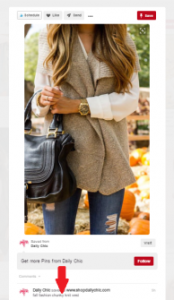
Advertisers are in a critical moment in time.
There is a plethora of new ways for brands to reach their target audiences thanks to the numerous online outlets and emerging technology. At the same time, consumers have become savvier than ever about advertising – and specifically how to avoid it.
The use of ad blockers is on the rise, and projections show the numbers only getting bigger. How can you reach your audience when the majority of them are using software specifically to hide your ads?
One solution that has proven to be effective is to use native ads, which can show up just like editorial content or which take a form that blends in with the rest of the content on the site. Ad blockers often don’t flag these ads, and many users are more willing to click through on these ads.
Mobile advertising presents even more challenges. Not only are mobile users even more likely to use ad blockers than PC users, but ads don’t show up the same on mobile devices, which means that they may not be as effective when they are seen.
Here are a few things that industry experts agree that mobile native ads need to be effective:
Responsive Design
What a banner ad looks like on a PC is not the same as what it will look like on a smart phone, which is also not the same as what it will look like on a tablet.
If you create ads that are sent out non-discriminately to all platforms, you are not going to get the results you want.
Improperly formatted ads are going to block mobile content and disrupt the user experience, which will make users click away from the ads, leave the site, and likely not return to the site.
You must create ads that have a responsive design to automatically adjust to each format, or – better yet – you should design ads specifically for the format on which you plan to publish them.
Ads should be created with the platform and the needs of those users in mind. That way, the ads will integrate seamlessly into the environment and will appeal to the needs of those users.
Include Multiple Assets
Not all elements work for ads on all platforms. If you want to make your ads truly responsive, you need to have multiple assets ready to go for all your ads.
That means that you need to have images, videos, fonts, graphics, headlines, and copy options for your ads. These can then be added, subtracted or switched around depending on the needs of the platform and the specific placement of the ad.
For example, an in-body ad for a smart phone should likely include a photo and a catchy yet short headline. However, additional graphics should be minimized, and the right sized photo should be used.
By providing multiple assets, you can maintain the overall look and tone of your ad while also staying true to your campaign design.
Use Contextual Targeting
Native ads should be as much a part of the site design and content as possible. That means also using contextual targeting to display ads that are relevant to the content.
Ads should be relevant to the page on which they appear, not just the topic of the site itself. So just because your product is for weight loss doesn’t mean it can show on any site about health – it needs to show on a specific page about weight loss methods or benefits.
The more closely aligned the content is with the ad, the more effective the ad will be.
Use Programmatic Placement
Many site owners place ads manually, or they choose preset locations. When you buy ads, you choose the spot you want.
However, these placements don’t have the same impact on every user. Some users may be more receptive to seeing an ad in a sidebar, while others will be more likely to act if they see the ad in body.
For the best performance, your ads should be placed automatically based on user signals. You can do this by choosing programmatic placement, which uses algorithms to place your ads in the right place at the right time for the right user.
With the right software placing your ads, you will get a much higher return and more exposure for your brand.
Mobile users are not going anywhere. The vast majority of people on the planet own smart phones and use them regularly, and you must adapt your online marketing strategies to them if you are going to remain competitive. Using native ads for your mobile marketing can help you reach more people, and using these tips can help you get more from those native ads. Start your new campaign today and see how these changes make a big difference to your results.
Digital & Social Articles on Business 2 Community(24)








